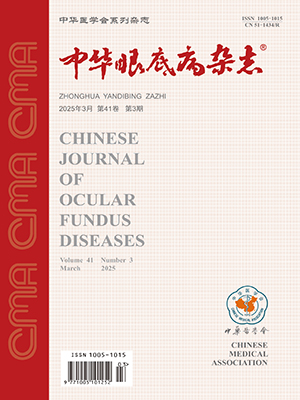Objective To observe the the inhibitory effect of recombined adenovirus mediated delivery of p21 (rAd-p21) on oxygen-induced retinal neovascularization in mice. Methods A total of 56 C57BL/6 mice at the age of seven days were divided into control group, phosphate buffer solution (PBS) group, rAd-p21 group and rAdno purpose gene control (rAd-NC) group, 14 mice in each group. The retinal neovascularization of PBS, rAd-p21and rAd-NC group were induced by oxygen, and received an intravitreal injection 1 mu;l PBS, rAd-p21 and rAd-NC at postnatal day 11, respectively.The rats of control group were not intervened. At postnatal day 17,RNV was determined by retinal flat mounts and retinal section; non-perfusion areas of retina were analyzed by Image-Pro plus 6.0 software; reverse transcription-polymerase chain reaction (RT-PCR) and Western blot was used to measure the mRNA and protein expression of p21 and CDK2. Results Compared with PBS and rAdNC groups, the retinal nonperfusion areas, neovascularization and the numbers of endothelial cell nuclei breaking through the internal limiting membrane in rAd-p21 group were reduced significantly. Nonperfusion areas of retina in rAd-p21 group was less than that in PBS and rAd-NC groups, the difference among these three groups was significantly (F=101.634,P<0.05). Compared with the other three groups, the level of p21 mRNA and protein in rAd-p21 group increased significantly (F=839.664, 509.817;P<0.05); the level of CDK2 mRNA and protein in rAd-p21 group decreased significantly (F=301.858, 592.882;P<0.05). Conclusion rAd-p21can inhibit oxygen-induced retinal neovascularization, up-regulated p21 expression and down-regulated CDK2 expression may be the mechanism.
Citation: 韩金栋,袁志刚,郑华宾,颜华. Recombined adenovirus mediated delivery of p21 inhibits oxygen-induced retinal neovascularization in mice. Chinese Journal of Ocular Fundus Diseases, 2012, 28(5): 493-497. doi: Copy
Copyright © the editorial department of Chinese Journal of Ocular Fundus Diseases of West China Medical Publisher. All rights reserved




